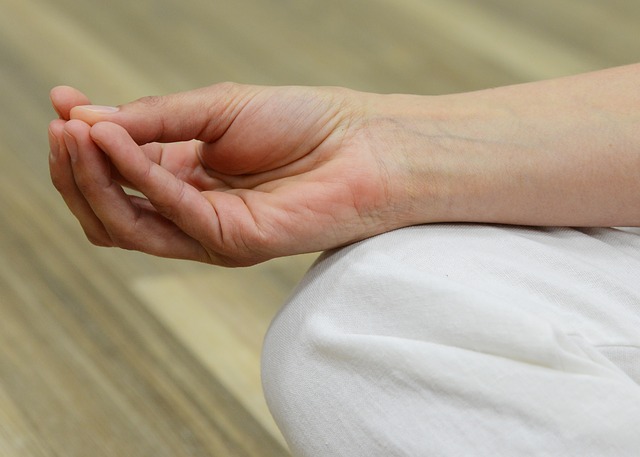Meditation Teacher’s Guide and Tips – Part 2
Teaching Meditation Tips
Free Meditation Teacher’s Guide
Teaching a Meditation Class Phase 3 – The Work:
In part 1 of this series on teaching a meditation class, Teaching a Gentle Yoga and Meditation Class, we covered the Orientation and Warm-up period and now we come to the most important phase of the meditation class, the Work section. In this section, you will actually teach the students a meditation technique and have them practice it as well. Depending on the level of your students you should choose the meditation accordingly. For a class with students of mixed proficiency you can teach meditations which have levels within them, such as the excellent Zen Meditation Technique, which allows students to practice at a level suitable to them.

Here are the objectives for this key phase of your class.
Objectives for Phase 3 of Your Meditation Class:
1. Teach a useful meditation technique.
2. Give instructions regarding safety, specially if the technique has advanced components such as breath retention.
3. Practice the meditation technique.
4. Perform ending prayers and visualizations.
5. Have a question & answer period.
1-3. Teach and Practice a Meditation Technique:
The whole reason for the class is for the students to learn and practice meditation with you. So this phase should be the primary focus of the class. Sometimes you can teach meditations based on special requests, or else you can pick ones you want to teach. You will find many meditations in the Free Online Guided Meditation E-book, and most of them have videos associated with them to help you see clearly how they are to be done.
In general, I suggest the practice of Zen Meditation, Silent Mind Meditation, Silent Mantra Meditation, and other awareness techniques for long term consistent practice in your classes. Such meditations continue to bestow benefits on those who practice it, and they allow each student to practice at their own level and pace. It is though often fun to practice meditation that require group chanting or other such meditation as well.
Special meditations which can only be done in groups are also especially appropriate for classes. Such meditations such as the Healing Circle or Sufi Meditations can be a great experience for the students as well. I will be uploading such unique meditations as well to the website and you will of course find them added to the Free Online Guided Meditation E-book.
Even though you are going to just teaching meditation, keep in mind that many meditations can be quite advanced, so don’t forget to follow the safety instructions that are given with each technique. Specially be alert when meditations require students to hold their breath, host difficult mudras (hand/eye positions), or require body locks. Such meditations should be approached with respect and intelligence, and developed gently over time.
In general, you are going to only have time for about a 20 to 30 minute session. Keep in mind that this is A LOT for a beginner. They might not be able to sit for this long, so be gentle with them. Instruct them that they can take a break after 5, 10 or 15 minutes, to stretch their legs and then restart again. The intermediate or advanced meditators should not be given this option. Unless they are about to injure themselves, encourage them to sit through the entire session. If you have a longer class, and have 40 minutes or more for the meditation phase, then I suggest breaking up this phase into 2 (20) minute meditation session, but giving the option for advanced students to continue right through the entire session.
There are lots of tips on this website regarding meditation practice, which will really help you be a better teacher and meditator, so be sure to check them out as well. Look at the related articles and article series listed below for such tips. One important tip though is the use of cushions for meditation, and I strongly recommend having these available to students in your class. Zen Zafus work best here. Check out the article How to Meditate, for more basics like this.
4. Ending Prayers:
At the very end of class, after the students have completed their meditation, it is nice to practice a few important prayers. Here are the 3 prayers I do at the end of every class.
To pray with power and focus, so the thoughts manifest in reality, have them inhale deeply hold their breath and then prayer/visualize. So before each of these prayers below, have them inhale, hold their breath, focus their mind and then do the prayer. Then exhale and move on to the next prayer.
- Visualize you and your life exactly as you want it to be.
- Send out a healing prayer to someone who you know needs it.
- Pray for peace and love on Mother Earth, and peace and love in everyone’s heart.
At the very end of the class you can end with a long OM or end with the mantra SAT NAM. Both are great ways to add a finishing touch to the class.
5. Question / Answer Time:
Since a Yoga or Meditation class has a certain rhythm and flow, I request the students to ask their questions at the end of class. As long as you are very clear in your instructions, have followed the guidelines laid out above and do good demonstrations for the poses and meditations, this works very well. So at the end of class, relax, sit back and allow the students who want to ask questions to do so, other students can stay for this period, or leave if they want to.
Summary of Teaching a Meditation Class:
So there you have a very detailed and comprehensive guide on how to teach a meditation class. I hope it gives all you teachers some good tips and guidance, and I hope it helps make your gentle yoga and meditation class a fantastic and transforming experience for your students.




xlwbiemcewjdqyyfwykrcctyoyumge